Table of contents
The seeds of Kañiwa or Cañihua ( Chenopodium pallidicaule ) do not contain gluten, which is why they are classified as pseudocereals. Raw grains have a high protein and nutrient content and are also available organically .
Use in the kitchen
What is Kañiwa (Cañihua)? The very small, brownish seeds are nicknamed 'baby quinoa' because of their relationship to quinoa . Kañiwa is rich in nutrients and gluten-free - and is therefore enjoying growing popularity.
Whether as a side dish, in savory main courses or in sweet treats: the use of the nutty, chocolatey tasting grains opens up a wealth of possibilities for creative cooks who are looking for new and healthy ingredients.
Kañiwa has many sweet uses. In muesli bars, the pseudo-cereal can replace quinoa, in desserts such as pancakes or puddings, it brings an interesting texture and a distinctive, slightly chocolatey taste. Together with fruits (e.g. strawberries ) and various nuts (e.g. macadamia nuts or walnuts ), sweet delicacies with a healthy twist are created. As flour, Kañiwa can also be used in cakes or other desserts, or can replace some of the often used wheat flour .
Cooked kañiwa seeds enrich salads as a nutritious addition. Combined with mixed leafy vegetables (such as rocket, lamb's lettuce and baby spinach ), fresh herbs (eg thyme, parsley or mint ) and an oil-free salad dressing or a salad sauce made from lemon juice and rapeseed oil, you can conjure up a healthy and tasty grain salad.
Can you eat Kañiwa (Cañihua) raw? In contrast to raw quinoa, Kañiwa contains fewer bitter saponins. 2 If you want to enjoy Kañiwa raw, you can use it in muesli ( pea muesli or pea muesli plus oat flakes, originally with quinoa). Otherwise, it is best to let the seeds germinate. Germinated Kañiwa sprouts are particularly nutritious and taste good in sprout salads or as a topping on various cold and warm dishes.
In the Andes, the home of Kañiwa, the pseudo-grain is traditionally not eaten raw. Roasted and ground, it is used as fine flour, called Kañiwako. The nutty flour is mixed with milk, broth or water to make a porridge; it is the traditional breakfast of the rural population. Kañiwako is also consumed in drinks, processed into small biscuits (quispiño) or in bread, pasta and sweet dishes. 1, 2 On long journeys, locals like to have Kañiwa flour in their luggage as provisions thanks to its high calorie and protein content. 2 ,3
Your own preparation
If you want to use Kañiwa as a side dish or as a basis for various recipes, you cook the seeds in water or vegetable stock . Preparation is simple and similar to that of its close relative, quinoa . Bring the seeds to the boil in a pan with twice the amount of stock or water. Then simmer the Kañiwa for 15-20 minutes, stirring occasionally. Then let the seeds rest in a closed pan for ten minutes to absorb the remaining liquid. Loosened with a fork, Kañiwa is perfect as a side dish, e.g. with vegetables such as peppers, zucchini or eggplant .
Vegan recipe for chocolate pudding with Kañiwa
Ingredients (for 4 people): 100 g Kañiwa (raw), 500 ml hazelnut milk (organic), 4 tbsp cocoa powder, 150 g Medjool dates (organic), ½ tspvanilla powder, 100 graspberries, 100 gblueberries, 2 tbsp chopped walnuts, 2 tbsp hemp seeds .
Preparation: Finely grind the Kañiwa (e.g. in a coffee grinder or a blender) and mix in a bowl with cocoa powder and vanilla powder. Heat the hazelnut milk in a saucepan until it reaches 50 ml and gradually stir in the Kañiwa flour with a whisk until the pudding begins to thicken. Then remove from the heat and allow to cool slightly. Puree the pitted Medjool dates in a blender with the remaining hazelnut milk. Add the Kañiwa mixture to the blender with the dates and mix until creamy. Add a little more water or hazelnut milk if necessary. Serve the finished pudding in glasses and allow to cool further. Garnish with fresh raspberries, blueberries, walnuts and hemp seeds before enjoying.
Vegan recipes with Kañiwa can be found under the note: " Recipes that have the most of this ingredient ".
| Not only vegans or vegetarians should read this: Vegans often eat unhealthily. Avoidable nutritional errors . |
Purchasing - Storage
Whole Kañiwa seeds are rarely found in supermarkets such as Coop, Migros, Denner, Volg, Spar, Aldi, Lidl, Rewe, Edeka, Hofer, Billa or organic supermarkets ( Denn's Biomarkt and Alnatura ). Occasionally, retailers offer Cañihua in flakes. If you want to try Kañiwa seeds, you can buy them in online shops and occasionally in well-stocked health food stores.
Do not be confused by the various spellings for Kañiwa in the trade (see below in the chapter on alternative names). The terms 'peeled' and 'unpeeled' can also be interpreted in different ways. According to our information, commercially available 'unpeeled' seeds are cleaned of pericarp (fruit wall) and flower residues (calyxes): This is traditionally done by threshing, sorting, washing with water, drying and sieving. However, they are not further peeled. 23,27,28
Kañiwa is available all year round because the seeds are imported dried from South America and have a long shelf life. Some suppliers use normal drying temperatures for whole seeds around 110 °C, which is why it is no longer considered raw food.
The availability of Kañiwa (raw) varies depending on the size of the store, catchment area, etc. Our recorded food prices for the DA-CH countries can be found above under the ingredient image - and by clicking you can see their development at various suppliers.
Storage tips
Kañiwa seeds (Cañihua) should be stored in a cool, dry place, protected from light, in a tightly sealed container. Stored in this way, the pseudo-cereal will last for one to two years.
Ingredients - Nutritional values - Calories
Kañiwa contains (unpeeled and raw) about 417 kcal per 100 g, with 71% carbohydrates (of which 7.2%fiber ) and 9.7% fat. The seeds have a high protein content of about 16 g/100g. 23 Fluctuations depending on variety, origin and growth pattern are a known phenomenon. 3,23
The proteins present in Kañiwa are important because of their high quality: the brown seeds provide all the essential amino acids, which are similar in composition to casein (milk protein). 16 Studies have shown that Kañiwa is rich in lysine, an amino acid that is absent or only present in insufficient quantities in most cereals, which makes their amino acid spectrum incomplete. 4,5
In addition to the macronutrients, Kañiwa contains important micronutrients. The manganese content is particularly noteworthy. With 5.3 mg per 100 g, Kañiwa covers 264% of the daily requirement. 23 Similar values can be found in oats (4.9 mg/100g). Teff (dwarf millet) contains far more manganese at 9.2 mg/100g. 22
The iron content is 13 mg/100g. 23 This amount represents 96% of the daily iron requirement. This value is comparable to the iron content of morels, which is 12 mg per 100 g. Fenugreek leaves contain slightly more iron (18 mg/100g), but you don't consume much of them. 22
An important vitamin is folate . Kañiwa seeds contain 148 µg of folate per 100 g, which is 74% of the daily requirement. 23 Endive, which can be eaten raw as a salad, contains a similar amount of folate. Quinoa has a slightly higher folate content at 184 µg/100g. 22
Kañiwa is also a good source of magnesium . With 262 mg per 100 g, the seeds cover 70% of the daily requirement. 23 This value can be compared to that of almonds (270 mg/100 g). Flax seeds have a much higher value, with a magnesium content of 392 mg per 100 g. 22
According to the cited study from 2023 , peeled seeds are poorer in macrominerals (e.g. magnesium: 202 mg), which are mostly found in the outer layers, as well as in iron (9.6 mg) and manganese (3.9 mg/100g). 23
You can find all of Kañiwa's ingredients, how much they cover your daily needs and comparison values with other ingredients in our nutrient tables below the ingredient image.
Health effects
Chenopodium pallidicaule (cañihua) is considered a health-promoting food due to its high nutritional quality and significant macro- and micronutrient value (see previous chapter). 10,11 In the past, kañiwa replaced animal protein sources in the Andes. In some regions of Peru and Bolivia, kañiwa, together with quinoa, is still the most important source of protein today. 7 Nevertheless, one should not label such foods with the meaningless term superfood, but rather focus specifically on their benefits.
Kañiwa lacks the protein group of prolamines found in wheat, barley, rye and oats, which are the trigger for celiac disease (gluten intolerance). Kañiwa is therefore classified as a so-called pseudocereal; people who suffer from gluten intolerance can eat Kañiwa without any problems. 6
The positive effects of consuming Kañiwa were demonstrated in an animal laboratory study on rats. For twelve weeks, a group of animals suffering from iron deficiency were given Kañiwa flour in combination with vitamin C, while control groups received other foods. After this period, the Kañiwa group had significantly increased hematocrit levels, which proves the anti-anemic effect of Kañiwa. In addition to alleviating the iron deficiency, it was found that the Kañiwa flour had a positive effect on the animals' weight and size. 10 A study on women at risk of anemia in Peru reached a similar conclusion. After seven weeks of administration of Kañiwa and vitamin C, they found that the women's hemoglobin and hematocrit levels had increased significantly compared to a control group. This suggests that the high iron content in Kañiwa improved the anemic condition, leading to a noticeable relief of symptoms. 12
In another laboratory study, three bioactive peptides in Kañiwa were isolated using enzymes. Analysis of these peptides revealed their potentially high antioxidant and antihypertensive effects. The results suggest that Kañiwa peptides could be a promising basis for the development of nutraceuticals and functional foods. Further studies are required to evaluate the bioactivity and bioavailability of the identified peptides in the human body. 4
Secondary plant substances
Many of the health effects of Kañiwa can be attributed to the secondary plant substances it contains. Our article on secondary plant substances provides an overview of the classification of the substance groups, their occurrence in foods and possible effects on humans.
Kañiwa contains the following secondary plant substances:
- Isoprenoids : Carotenoids : Beta-carotene, Beta-cryptoxanthin, Lutein, Zeaxanthin; Saponins: Oleanolic acid, Hederagenin; Terpenoids: Triterpenes (Hederagenin) 6,8,14
- Polyphenols : Phenolic acids: vanillic acid, ferulic acid, gallic acid, chlorogenic acid, caffeic acid, p -coumaric acid, para -hydroxybenzoic acid; resorcinol; flavonoids: flavanols (kaempferol, quercetin, rutin, isorhamnetin, rhamnetin, myricetin), flavanols (catechins) 8,9,11,15
However, it should be noted that the composition of the secondary plant substances in Kañiwa can vary depending on the variety, time of harvest and growing conditions. Therefore, quantities are only of limited use and should only be understood roughly.
An in vitro study found that the phenolic compounds contained in the two Chenopodium species Kañiwa ( Chenopodium pallidicaule ) and Quinoa ( Chenopodium quinoa ) are able to inhibit carbohydrate-hydrolyzing enzymes that are associated with the development of type 2 diabetes. The study results suggest that the polyphenols gallic acid, chlorogenic acid and rutin in particular are involved in the inhibitory effect of the diabetes-promoting enzyme α-amylase. 9
The phenol resorcinol present in Kañiwa has shown antitumor, antibacterial, antifungal and antiparasitic effects in studies. Although the mechanisms of action of Kañiwa resorcinol are not exactly clear, it is assumed that it has health benefits. 13
Saponins contained in kañiwa also have positive effects. Although too large amounts of saponins can have a harmful effect on the body, they have a health-promoting effect in small amounts, such as in kañiwa. Saponins have anticarcinogenic, liver-protective, antioxidant, antimicrobial and antiparasitic effects, among others. They can lower blood lipid levels and cholesterol levels in the blood, while raising insulin levels and inhibiting the transport of glucose in the blood. They can also reduce oxidative stress. In this way, saponins work against diseases such as type 2 diabetes, obesity and cardiovascular diseases. 2,7,14,29
Quercentin is the most common flavonol in kañiwa. It has a strong antioxidant effect because it is able to bind free radicals. This can protect against cancer and cardiovascular diseases. 11,14 A study of kañiwa seeds also showed that their flavonol content is five to ten times higher than that of berries, which are considered to be highly antioxidant foods. In contrast, common types of grain ( wheat, rye, oats, barley, etc.) do not contain flavonols. 15 Another study shows an increase in antioxidant capacity through induced germination. After a germination period of 72 hours, a much higher amount of secondary plant substances was extracted. 25
Folk medicine - natural medicine
Kañiwa is also used in traditional folk medicine. In Bolivia and Peru, powdered Kañiwa seeds, dissolved in a mixture of water and vinegar, are used to treat typhus. Roasted Kañiwako (Kañiwa flour) is considered an effective remedy for altitude sickness and dysentery. 8 The leaves are also used to treat dysentery, while the seeds are used for inflamed mucous membranes (e.g. for colds) and for urinary tract problems. 8 The ashes of burnt stems and stalks can also be used as an insect repellent. 16
Ecological footprint - animal welfare
Despite extensive research, we have not found any concrete information on the ecological footprint of kañiwa ( Chenopodium pallidicaule, Cañihua). One reason for this could be that the kañiwa seeds produced by small farmers in Peru and Bolivia are mainly intended for their own consumption. Unlike its relative quinoa, kañiwa is only sold and exported in very small quantities; the production area is much smaller. Kañiwa is often sown in fields where quinoa or potatoes were previously grown. 17 Kañiwa is a hardy plant that can withstand cold, drought and high salinity in the soil. Kañiwa plants can be grown in areas affected by water shortages and under adverse conditions, but they then produce a low yield of around 1100 kg/ha. 1,17 Under optimal conditions, yields can be increased to approximately 3400 kg/ha (good fertilizer and irrigation management). 19
According to Concito, the CO 2 footprint of quinoa in Denmark is 3.65 kg CO 2 eq/kg, of oats 1.48 kg CO 2 eq/kg and of wheat 1.06 kg CO 2 eq/kg; the figures given apply to 2024 18 (2021: quinoa 2.49 kg, oats 0.95 kg, wheat 0.84 kg CO 2 eq/kg). The value of kañiwa is probably somewhere in between, we do not have specific data. Imports of kañiwa to Europe increase the footprint due to CO 2 emissions during transport.
The water footprint for quinoa is around 4512 l/kg, while 1 kg of rye requires significantly less water at 1544 l/kg. 26 We could not find any figures on water consumption for Kañiwa.
For detailed explanations of various sustainability indicators (such as ecological footprint, CO2 footprint, water footprint), see our article: What does the ecological footprint mean?
Worldwide occurrence - cultivation
Kañiwa ( Chenopodium pallidicaule ) comes from the Lake Titicaca basin between Peru and Bolivia, where the plant has been cultivated for around 4000 years. The Andean region in Peru and Bolivia is the only area in the world where Kañiwa is grown. There, the pseudocereal plays a crucial role in the food security of the rural population. Kañiwa can be considered a semi-domesticated crop, as indicated by the morphologically wild characteristics of the plant. During the investigation of archaeological sites, starch remains of Kañiwa were found, which indicate an age of 3200 to 5000 years. However, the history of the domestication of Kañiwa is unclear and speculative. 17,19
Cultivation - Harvest
At an experimental level, the cultivation of Kañiwa has been tested in Europe in Denmark and Finland. Due to the different daylight conditions in the northern hemisphere, the fruit setting period takes longer than in the Andes. Nevertheless, these experiments were able to produce fully ripe Kañiwa seeds. 19,20
Kañiwa can also be grown in the garden in Europe. Sowing is possible at a soil temperature of 5 °C, which allows early cultivation to begin in spring. Kañiwa thrives in sandy soils and acidic soils as well as in slightly saline soils. Kañiwa plants are adapted to the conditions of the Andes, so fully grown plants can withstand night frosts down to around -10 °C. They are resistant to strong winds, heavy rainfall, diseases and pests. 21 When growing, good weed management is important, as larger weeds compete with the crop. In addition, weeds from the genus Chenopodium can contaminate the harvest. Harvesting is possible as soon as the seed heads change color. Ideally, harvesting should be done before they are fully ripe to prevent the seeds from falling out prematurely. 19 After cutting, the plants are hung upside down in a tightly woven fabric bag and left to dry. The seeds are then threshed. In addition to the seeds, the leaves can also be enjoyed as a spinach-like vegetable. 21
Further information
Kañiwa ( Chenopodium pallidicaule ) belongs to the genus Goosefoot, which is part of the botanical family Amaranthaceae. In addition to Kañiwa, two other South American Amaranths are known as pseudocereals: Quinoa ( Chenopodium quinoa ) and amaranth ( Amaranthus caudatus ). Pseudocereals also include buckwheat ( Fagopyrum esculentum ) and Mexican chia seeds ( Salvia hispanica ).
Other gluten-free grains include corn, rice, millet and teff (dwarf millet) .
Alternative names
Common names or spellings for Kañiwa are Cañihua, Kañawa, Cañahua, Cañawa or also Kaniwa, Kanihua and Canihua. As mentioned, Kañiwa is also often called baby quinoa. It is often incorrectly spelled Cahihua.
The English name is kañiwa.
Other uses
Kañiwa (cañihua) is valued not only for its seeds but also for its ash. Burning the residues of the kañiwa plant produces an ash that is in great demand among consumers of the coca plant, which is traded in the highlands of Peru and Bolivia. The ash is mixed with water to form a paste called "llipta," which is dried and formed into small balls. 16 The calcium contained in the paste extracts alkaloids from the coca leaf when chewed, causing the desired intoxicating effect that also helps against altitude sickness. 1,2 Kañiwa seeds are used raw to make an alcoholic drink. The seeds are allowed to germinate and then ground into a flour that is fermented. 1
There are also attempts to use Kañiwa in the cosmetics industry. A study has shown that oil extracted from Kañiwa has good properties for the development of skin creams. The polyunsaturated fatty acids and bioactive ingredients can help improve the condition of the skin. 24
Bibliography - 29 Sources (Link to the evidence)
| 1. | Gade DW. Ethnobotany of cañihua (Chenopodium pallidicaule), rustic seed crop of the altiplano. Economic Botany. 1970;24(1):55–61. |
| 2. | Repo-Carrasco-Valencia R, Acevedo de La Cruz A, Icochea Alvarez JC, Kallio H. Chemical and functional characterization of kañiwa (Chenopodium pallidicaule) grain, extrudate and bran. Plant Foods Hum Nutr. Juni 2009;64(2):94–101. |
| 3. | Pérez GT, Steffolani ME, León AE. Cañahua: an ancient grain for new foods. In: Kristbergsson K, Ötles S, Herausgeber. Functional Properties of Traditional Foods. Boston, MA: Springer US; 2016. S. 119–130. |
| 4. | Chirinos R, Ochoa K, Aguilar-Galvez A, Carpentier S, Pedreschi R, Campos D. Obtaining of peptides with antioxidant and antihypertensive properties from cañihua protein (Chenopodium pallidicaule Aellen). Journal of Cereal Science. September 2018;83:139–46. |
| 5. | Mangelson H, Jarvis DE, Mollinedo P, Rollano‐Penaloza OM, Palma‐Encinas VD, Gomez‐Pando LR, u. a. The genome of Chenopodium pallidicaule: An emerging Andean super grain. Appl Plant Sci. 8. November 2019;7(11):e11300. |
| 6. | Niro S, D’Agostino A, Fratianni A, Cinquanta L, Panfili G. Gluten-free alternative grains: nutritional evaluation and bioactive compounds. Foods. 12. Juni 2019;8(6):208. |
| 7. | Repo-Carrasco R, Espinoza C, Jacobsen SE. Nutritional value and use of the andean crops quinoa (Chenopodium quinoa) and kañiwa (Chenopodium pallidicaule). Food Reviews International. 5. Januar 2003;19(1–2):179–189. |
| 8. | Kokanova-Nedialkova Z, Nedialkov P, Nikolov S. The Genus Chenopodium: Phytochemistry, Ethnopharmacology and Pharmacology. PHCOG REV. : Review Article. 2009;3(6):280-306. |
| 9. | Coronado-Olano J, Repo-Carrasco-Valencia R, Reategui O, Toscano E, Valdez E, Zimic M, u. a. Inhibitory activity against α-amylase and α-glucosidase by phenolic compounds of quinoa (Chenopodium quinoa Willd.) and cañihua (Chenopodium pallidicaule Aellen) from the Andean region of Peru. Pharmacognosy Journal. 2021;13(4):896–901. |
| 10. | Moscoso-Mujica G, Mujica Á, Chávez J, Peña C, Begazo N, Estrella J, u. a. Antianemic activity of quinoa (Chenopodium quinoa Willd) Collana Negra variety and kanihua (Chenopodium pallidicaule Aellen) Ramis variety seed flour in anemic rats. SN Appl Sci. November 2022;4(11):318. |
| 11. | Ranilla LG, Apostolidis E, Genovese MI, Lajolo FM, Shetty K. Evaluation of indigenous grains from the peruvian andean region for antidiabetes and antihypertension potential using in vitro methods. Journal of Medicinal Food. August 2009;12(4):704–13. |
| 12. | Novak W, Mujica A, Vogl C, Jacobsen S (2002). The effect of Canahua (Chenopodium Pallidicaule Aellen) on hemoglobin levels and iron status of rural women in risk of anemia in Puno, Peru. Dissertation, European Tropical Forest Research Network, Vienna-Austria. |
| 13. | Peñarrieta JM, Alvarado JA, Åkesson B, Bergenståhl B. Total antioxidant capacity and content of flavonoids and other phenolic compounds in canihua (Chenopodium pallidicaule): An Andean pseudocereal. Molecular Nutrition Food Res. Juni 2008;52(6):708–17. |
| 14. | Villa DYG, Russo L, Kerbab K, Landi M, Rastrelli L. Chemical and nutritional characterization of Chenopodium pallidicaule (Cañihua) and Chenopodium quinoa (Quinoa) seeds. Emirates Journal of Food and Agriculture. 18. Mai 2014;609–615. |
| 15. | Repo-Carrasco-Valencia R, Hellström JK, Pihlava JM, Mattila PH. Flavonoids and other phenolic compounds in Andean indigenous grains: Quinoa (Chenopodium quinoa), kañiwa (Chenopodium pallidicaule) and kiwicha (Amaranthus caudatus). Food Chemistry. Mai 2010;120(1):128–33. |
| 16. | Paez AW, Eyzaguirre P. Canihua deserves to come back. LEISA magazine, 2004, 19(3): 11-13. |
| 17. | Rodriguez JP, Jacobsen SE, Andreasen C, Sørensen M. Cañahua (Chenopodium pallidicaule): a promising new crop for arid areas. In: Hirich A, Choukr-Allah R, Ragab R, Herausgeber. Emerging Research in Alternative Crops. Cham: Springer International Publishing; 2020. 221–243. |
| 18. | CONCITO. The Big Climate Database, version 1. 2024. Quinoa, black; Wheat, kernels, whole/cracked; Oats, rolled, not enriched. |
| 19. | Rodriguez JP, Bonifacio A, Gómez-Pando LR, Mujica A, Sørensen M. Cañahua (Chenopodium pallidicaule Aellen). In: Farooq M, Siddique KHM. Neglected and underutilized crops: future smart food. Elsevier; 2022. 45-93. |
| 20. | Carmen ML. Acclimatization of quinoa (Chenopodium quinoa, Willd) and canihua (Chenopodium pallidicaule, Aellen) to Finland. 1984. In: Annales agriculturae Fenniae, Vol. 23, 3. 135-144. |
| 21. | Deaflora de: Canihua (Samen). |
| 22. | USDA United States Department of Agriculture. |
| 23. | Mérida-López J, Pérez SJ, Morales R, Purhagen J, Bergenståhl B, Rojas CC. Comparison of the chemical composition of six canihua (Chenopodium pallidicaule) cultivars associated with growth habits and after dehulling. Foods. 21. April 2023;12(8):1734. |
| 24. | Carpio-Jiménez C del, Molleda-Gutierrez RS, Tapia-Delgado P. Evaluation of properties of Chenopodium pallidicaule (Cañihua) oil for possible use in cosmetic formulations. J Oleo Sci. 2023;72(5):501–509. |
| 25. | Abderrahim F, Huanatico E, Repo-Carrasco-Valencia R, Arribas SM, Gonzalez MC, Condezo-Hoyos L. Effect of germination on total phenolic compounds, total antioxidant capacity, Maillard reaction products and oxidative stress markers in canihua (Chenopodium pallidicaule). Journal of Cereal Science. September 2012;56(2):410–507. |
| 26. | Mekonnen MM, Hoekstra AY. The green, blue and grey water footprint of crops and derived crop products. Hydrol. Earth Syst. Sci. 2011; 15: 1577-1600. Quinoa: Appendix II. |
| 27. | Bruno MC. Archaeobotanical insights into kañawa (Chenopodium pallidicaule Aellen) domestication: a rustic seed crop of the andean altiplano. Agronomy. 2023;13(8):2085. |
| 28. | Quiroga Ledezma CC, Ortiz Mérida AJ, Escalera Vásquez CR. Evaluación de un proceso novedoso de beneficiado en seco del grano de cañahua (Chenopodium pallidicaule Aellen), basado en la aplicación de un lecho fluidizado tipo surtidor. I&D. 2018;18(1):17–34. |
| 29. | Sharma K, Kaur R, Kumar S, Saini RK, Sharma S, Pawde SV, et al. Saponins: A concise review on food related aspects, applications and health implications. Food Chemistry Advances. 2023;2:100191. |

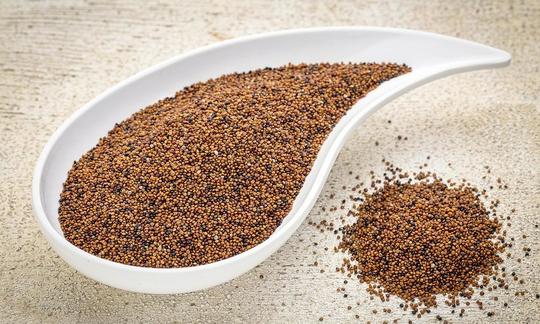

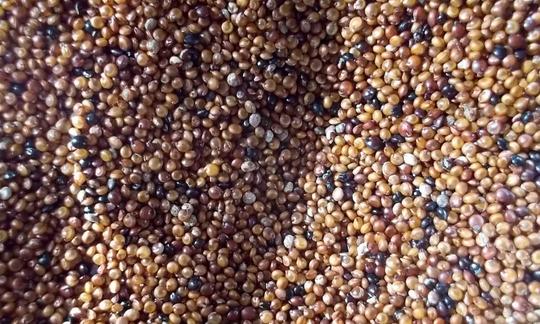

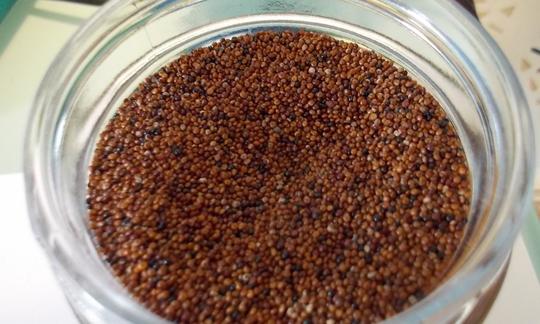

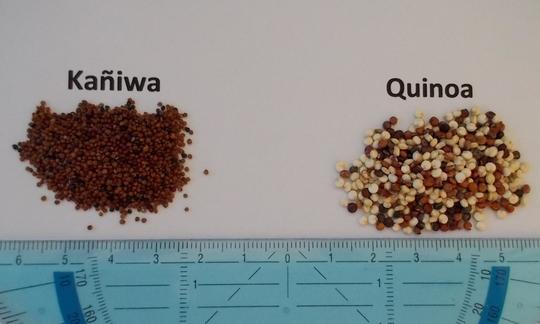

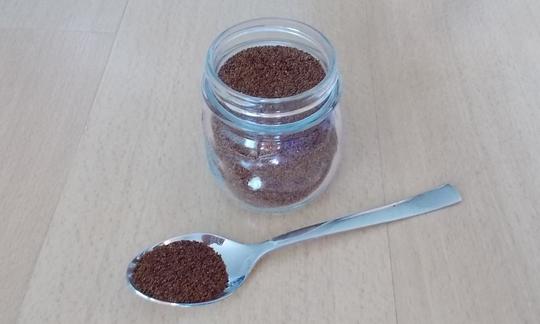






Comments